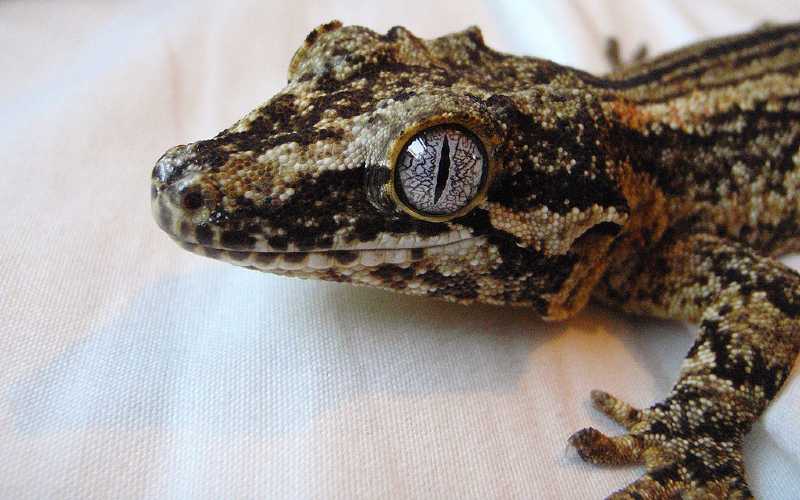The Gargoyle Gecko, also commonly referred to as the New Caledonian bumpy gecko, is a large species of gecko found only in the southern regions of New Caledonia. With the rapid progression of deforestation, the gargoyle gecko has its habitat threatened. Many people are interested in keeping Gargoyle Geckos as pets. Let’s take a look at the species in more detail.
What is a Gargoyle Gecko?
This gecko species is incredibly small reaching up to 125mm in size. It is the smallest of six species within its genus Rhacodactylus, however, it is being considered for protection by CITES which could put restrictions on their exportation.
As its name suggests this reptile has many bumps on the surface of its skin, giving it the appearance of having horns, much like a fantastical gargoyle. Where it differs from a gargoyle, is having a thin tail which it can use to grab hold of things or keep its balance, with small toe pads for grip. As it is used to climbing branches and trees in the wild, these characteristics were essential for its survival, especially being so small.
In terms of colouring, they naturally appear in grey, brown or red. However, in recent years breeders have been able to refine these into many different colours and patterns.
What is a Gargoyle Gecko’s Diet?
Like many geckos, the Gargoyle Gecko’s diet consists of omnivorous nutrients. That means that they eat a varied diet of vegetables, fruit and live insects. Brown and black crickets are easy enough for the gecko to hunt and exercise for whilst also being relatively cheap for the gecko carer. Whilst some geckos can eat waxworks, calciworms or mealworms for additional nutrients, they should only be given to this gecko as a treat maximum once a week. This is because they tend to be quite fatty and difficult to digest. We recommend that they are only given when your gecko has matured.
When it comes to fruit and vegetables, we recommend the EXO Terra crested gecko food which comes in a multipack. Not only does it give the added nutrients that your pet needs, but also isn’t too expensive. It doesn’t need to be a specific gargoyle gecko diet, as this species of gecko crosses with crested gecko species diets.
The vegetation should be given alongside the live food, 3-4 times per week depending on the size and wants of your gecko. If you’re feeding 4 times a week and find that they are putting on too much weight, scale back to 3 times a week.
The gargoyle gecko should be able to get enough hydration from the vegetation that you provide within the enclosure, however, always have a small water bowl as a backup option.
Keeping Gargoyle Geckos as a pet?
The gargoyle geckos are one of the most popular geckos on the circuit. Loved by its owners, the gargoyle gecko is super easy to care for. With their incredible temperament, handling this gecko is fun and enjoyable. Their food is easy to maintain and their enclosure can be kept simple.
Beginner owners would fall in love with a gargoyle gecko. Watching it use its semi prehensile tail to grip onto branches, whilst the bumps that remind owners of horns allows for them to be a sight for sore eyes.
Their enclosure should be kept at a mild to warm temperature, including a basking area of 24 degrees Celsius. These animals thrive in these temperature conditions, any hotter and they will become stressed.
Due to their tale, they love climbing and spend a lot of time doing so. Make sure there are lots of hardwood decorations fitted in the enclosure so that they can spend their time doing what they love.
If you enjoyed this article you might also like to read about Striped Gargoyle Gecko

